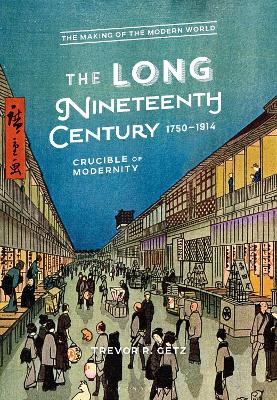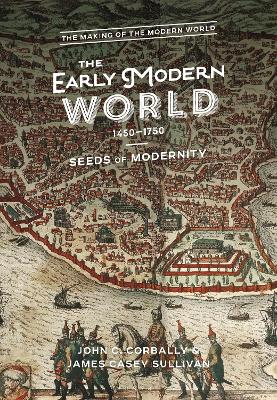The Making of the Modern World
2 total works
The Long Nineteenth Century, 1750-1914 is a global history textbook with a difference. It is a guide for students to the actions and experiences by which communities and individuals in different parts of the world constructed, contested, and were affected by major trends and events in the global past.
The book explores the global history of the 19th century holistically. Its content is framed in chapters that tackle themes rather than geographic regions or chronological sub-divisions. Moreover, in order to connect human experiences and perspectives with global trends and events, each chapter - whether it focuses on politics or religion, economics or environment - is underpinned by an approach emphasizes social and cultural history.
Through its pages, students critically encounter important global trends and key events from the Industrial Revolution to the Taiping Heavenly Kingdom. The book ends with an epilogue on the First World War that brings all of the themes of the volume together in one place and also provides a segue into the mid-20th century.
The book explores the global history of the 19th century holistically. Its content is framed in chapters that tackle themes rather than geographic regions or chronological sub-divisions. Moreover, in order to connect human experiences and perspectives with global trends and events, each chapter - whether it focuses on politics or religion, economics or environment - is underpinned by an approach emphasizes social and cultural history.
Through its pages, students critically encounter important global trends and key events from the Industrial Revolution to the Taiping Heavenly Kingdom. The book ends with an epilogue on the First World War that brings all of the themes of the volume together in one place and also provides a segue into the mid-20th century.
The Early Modern World, 1450-1750: Seeds of Modernity takes a distinctive approach to global history and enables a holistic view of the world during this period,without prioritizing any one nation or region. It guides students towards an understanding of how different empires, nations, communities and individuals constructed, contested and were touched by major trends and events. Its thematic structure covers politics, technology, economics, the environment and intellectual and religious worldviews.
In order to connect global trends and events to human experiences, each chapter is underpinned by a social and cultural history focus, enabling the reader to gain an understanding of the lived human experience and make sense of various perspectives and worldviews. The 'Legacy' feature also discusses connections between early modern history and the contemporary world, looking at how the past is contested or memorialized today. The result is a textbook that helps the 21st-century student gain a rich and nuanced understanding of the global history of the early modern period.
In order to connect global trends and events to human experiences, each chapter is underpinned by a social and cultural history focus, enabling the reader to gain an understanding of the lived human experience and make sense of various perspectives and worldviews. The 'Legacy' feature also discusses connections between early modern history and the contemporary world, looking at how the past is contested or memorialized today. The result is a textbook that helps the 21st-century student gain a rich and nuanced understanding of the global history of the early modern period.

